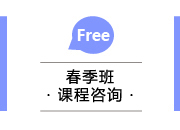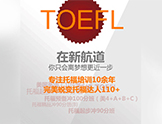英语单词拼读规则表
2012年07月27日 02:47 供稿单位:互联网 责编:杭州管理员 浏览0 次
杭州新航道学校为大家整理了英语单词拼读规则表,供考生们参考,以下是详细内容,希望能帮助我们的考生。
辅字组的读音
辅字组
读 音 例 词
b [b] bag bike bus blue
c [k] cake card
[s] face decide cinema
d [d] desk dad day
f [f] fine five face off
g [ ]
orange age
[g] good bag go
[ ]
thank
h [h] hello hat hot hand
j [ ]
jacket job June
k [k] key like bike
l [l] hello like lake
apple full bottle
m [m] morning name me
n [n] no nice in
p [p] map pen apple
r [r] Frank red
s
[s] spell thanks six
[z] please is nose
t [t] it what white ten
v [v] evening vest very
w [w] what we well
x [ks] box six
y [j] you yellow yes
z [z] zoo zero
sh [ ] English she ship
ch [ ]
China chess chair
th
[θ] thank three
[ ]
this that they
ck [k] black chick
ph [f] phone photo
wh [w] what white
[h] who whose
tr [tr] tree
dr [dr] dress
ts [ts] what’s it’s cats
ds [dz] beds hands cards
qu [kw] quite quiet
元音字母在重读开音节中的读音
元音字母
读 音 例 词
a [ei] name game
e [i:] he she me
i [ai] fine like
o [ou] go home
u [ju:][ u:] use blue
元音字母在重读闭音节中的读音
元音字母
读 音 例 词
a [æ] Alice map black thank
e [e] bed let pen desk yes egg
i [i] is in it this sit six milk
o [ ]
not box dog hot clock
u [ ]
mum bus cup lunch
元音字母组合在重读闭音节中的读音
元音字母
组 合 读音 例词
ai ay
ei ey [ei]
say day again play
eight they grey
al [o:] all ball talk wall
ea [i:] tea teacher please
ee [i:] green bee three
oa [ou] boat coat goat
oo [ u:] noon too moon food
[u] good look book cook
ou
ow [au] mouth house about
how now brown down
oi oy [oi] boy toy noise
-r音节的读音
字母
读 音 例 词
ar [α:] are car far farmer
or [ :]
or for sport short
er
ir
ur
or(w前)
[ :]
her certainly
girl bird first shirt
turn nurse
word worse
英语单词拼读规则表
1.单词注音方法推荐
在阅读过程中经常需要给一些生词注音,如果把音标写在单词的附近,一是麻烦,二是没有足够的空间来写音标,三是不需要把所有的音标符号都标注出来。
实际上许多字组的发音不需要查字典也知道该读什么音,不知道的信息可能是这个词的重音位置、重读音节中元字组的读音、个别辅音字母的读音等。
所以使用几个符号就可以很完美地给一个单词注音。
使用的符号为: 长音符号 _ 短音符号 . 重音符号 ´ [ ]音符号。 [i]音符号丨 哑音符号\
其中短音符号 . 和重音符号 ´ 也可以充当音节分割符号。
这些符号主要用来标注元音字组的读音。绝大多数辅音字组无需注音,少数辅音字组的读音还得靠音标来标注。
例如:
student student ´stu•dent
study stud•y
condolence con´dolence
feature fea•ture feature
feather feath•er
brown brown
country
sympathy
2.对英语单词可拼读性的认识
以整个词为单位,如果词中某个字组读音不规则,或词的重音位置不规则,那么这个词就属于读音不规则的词。
以音节为单位,如果词中某个音节读音不规则,那么这个音节就属于读音不规则的音节。
以字组为单位,如果词中某个字组读音不规则,那么这个字组就属于读音不规则的字组。
3.辅音字母双写的含义
辅音字母双写,主要是为了强调双写辅音字母前面的元音字母要发短音,或者说要按元音字母在重读闭音节中的拼读规则读音。例如:Seattle。通常ea被看作一个元字组,具有不可分割性,即便是这样,在双写辅音字母前面也被拆分开了。
例外的情况也有:suggestion collapse
4.字组的不可分割性
不管是元字组还是辅字组都具有不可分割性,所以在给一个词划分音节时,不把字组拆分到两个音节中去。例如:daugh-ter chil-dren。但有的词在遇到类似情况时还要考虑到词的来源。例如:wardroom,dr被划分到不同的音节里,是因为ward和room本来就是两个词。有时辅音字母连缀也有这种现象。
辅音字母双写,一方面可以方便找出音节划分点,另一方面是为了强调双写辅音字母前面的单个元音字母是个闭音节,例如:Seattle ,其中的字母a发短音。又例如:worry,现在把o读成[ ]音的人多起来了。
5.判断单词读音的三个步骤
一、数元字组的个数
数一数元字组的数目。有几个元字组就有几个音节。
二、划分音节
划分音节时以元字组为核心。
三、找出重读音节
1.单音节词都是重读音节
2.双音节词通常是个音节重读(前缀不重读)
3.多音节词在倒数第三个音节上重读
6.如何判断双音节词的重读位置?
双音节词的个音节通常是重读音节。
例如:´stu-dent ´Chi-na ´sec-ond ´au-tumn in-´deed
含有a- be- de- re- in- ex- 等前缀的双音节词往往是在第二个音节上重读。双音节词的重读位置不会因增加前缀或后缀而发生改变。例如:
a´bout be´fore ex´cuse re´pair for-´get-ful
多音节词通常在倒数第三个音节重读。
例如:´el-e-phant con-grat-u´la-tion
词尾有-ic或-tion,-sion的词,在-ic或-sion,-tion前的一个音节上重读。例如:scien´tific im´pression ´nation
一、元音字母在重读音节中的读音
元音字母 读 音 例 词 编 号
a 在开音节中 [ei] name plane Jane baby cake 1-01
在闭音节中 [æ] bag dad hat map black back 1-02
e 在开音节中 [i:] he these me Chinese 1-03
在闭音节中 [e] bed let pen desk yes egg 1-04
i 在开音节中 [ai] bike fly drive time nice kite 1-05
在闭音节中 [i] fish big drink sit milk swim 1-06
o 在开音节中 [ou] those close go hoe home no 1-07
在闭音节中 [ ] clock not box shop sock 1-08
u 在开音节中 [ju:] student excuse duty Tuesday 1-09
在闭音节中 [ ] bus cup jump much lunch 1-10
在开音节中,元音字母u在辅音字母j l r s后面时读[u:]音,例如:June blue ruler super 1-11
1-01特例
特例:vague vogue range paste plague change strange taste waste ache waste scythe opaque这些单词中的th ng gu ch st qu都被看作一个整体,都被看作一个辅音字母,其中的元音字母按开音节规则发音。和以上读音现象不同的词有:tinge[i]
1-02例外的词 many[e] any[e]
不符合1-04规则的词 English[i] pretty
1-05例外的词 policeman[i:] machine[i:]
以上这两个词源自法语,保留法语发音。
fatigue[i:]
下面这两个词保留了古英语的发音
live[i] give[i]
不符合1-07规则的词 to[u:] do[u:]
1-08例外的词 woman[u] wolf[u] roller[ u]
1-10例外的词 put[u] Bush[u] cushion[u]
二、元音字母在非重读音节中的读音
元音字母 读 音 例 词 编 号
a [ ] China another woman breakfast 2-01
[i] orange comrade village cabbage 2-02
e [ ] hundred student open weekend 2-03
[i] chicken pocket begin children 2-04
i [ ]/[i] holiday beautiful family animal 2-05
[ai] exercise satellite 2-06
o [ ] second tonight somebody welcome 2-07
[ u] also zero photo 2-08
u [ ] autumn diffcult 2-09
[ju:] popular congratulation January 2-10
动词中的a如果处在开音节位置,a读[ei]音,例如:operate 2-11
u处在开音节位置,又在辅音字母j l r s后面时,读[u(:)]音,例如:July influence February issue 2-12
不符合2-07规则的词 icon[ :] robot[ :] alcohol[ :]
不符合2-08规则的词 icon[ :] robot[ :] alcohol[ :]
三、元音字母在重读音节中的特殊读音
元音字母 读 音 例 词 编 号
a在[w]音后面 [ ] want what watch wash quality 3-01
a在f n sk ph sp ss st th前 [α:] after plant graph ask grasp glass fast father 3-02
i在-nd -ld和gh前 [ai] find child light high 3-03
o在-st -ld前 [ou] most postcard old cold 3-04
o在m n v th前 [ ] come monkey love mother 3-05
3-01例外的词 water[ :] wane[ei] wake[ei]
以上几个词都是开音节词
wag[æ]
3-02例外的词 ass[æ]
tomato[α:] 字母a后面是字母t,不符合3-02规则。这个词也可以按1-01规则来读 tomato[t ´meitou]
banana[α:] 重读音节里的字母a后面有字母n,符合3-02规则。由于重读音节里的字母a和后面的字母n并不是处在同一音节里,所以banana也可以读成[b ´nein ]
3-04例外的词 cost[ ]
3-05例外的词 colour[ :]
四、-r音节元音字组在重读音节中的读音
元音字组 读 音 例 词 编 号
ar
ar在[w]音后面 [α:] car farm dark sharpener 4-01
[ :] warm quarter towards 4-02
or
or在[w]音后面 [ :] forty morning short 4-03
[ :] word worker worse 4-04
er ir ur [ :] certainly bird Thursday 4-05
辅音字母r双写时,前面的元音字母不能与r构成-r音节,而是按重读闭音节的拼读规则发音。例如: carry sorry hurry 4-06
-r音节在非重读音节中通常读[ ]音,例如:dollar teacher martyr forget Saturday 4-07
4-03例外的词 attorney[ :]
4-04例外的词 worn[ :] sword[ :]
4-06例外的词
quarrel[ ] 按3-01规则读
surround sur-不重读
suppose sup-不重读
collect col-不重读
worry[ ] 也可以读成worry[´w ri]
五、-re音节元音字组在重读音节中的读音
元音字组 读 音 例 词 编 号
are [ε ] care dare hare 5-01
ere [i ] here mere 5-02
ire [ai ] fire hire wire 5-03
ore [ :] more score before 5-04
ure [ju ] pure cure 5-05
are ere ire ore很少出现在非重读音节中,ure在非重读音节中读[ ]音,例如:picture pleasure 5-06
重读元音字母加Rr,再加非重读元字组时,重读元音字母应按-re音节拼读规则拼读,字母Rr读[r]音。
例如:parent zero story during inspiring 5-07
某些常用词及多音节词经常出现长音短化现象。
例如:orange very American paragraph
不符合5-02规则的词 there[ε ] where[ε ]
不符合5-03规则的词 cire[s ´rei]
不符合5-05规则的词 sure[u ]
不符合5-06规则的词 failure
不符合5-07规则的词 assurance
不符合5-08规则的词 burial[´beri l] deteriorate
六、元音字组在重读音节中的读音
元音字组 读 音 例 词 编 号
ai/ay [ei] afraid rain wait day play 6-01
air [ε ] air hair chair pair repair 6-02
al
al在f m前 [ ] small ball talk wall all 6-03
[ :l] always also salt almost 6-04
[α:] half calm 6-05
au/aw [ :] autumn daughter draw 6-06
ea [i:] teach easy cheap please 6-07
[e] heavy bread sweater weather 6-08
[ei] break great 6-09
ear [i ] hear dear near clear year 6-10
[ε ] bear pear wear swear 6-11
[ :] earth learn early 6-12
ee [i:] jeep week green three 6-13
eer [i ] pioneer deer beer 6-14
ei/ey [ei] eight neighbour they 6-15
[i:] either key 6-16
eu/ew在
j l r s后 [ju:] new few newspaper 6-17
[u:] flew brew jewelry 6-18
ie/ei[s]音之后 [i:] piece field receive 6-19
oa [ou] coat Joan boat goal 6-20
oar/oor [ :] roar board door floor 6-21
oi/oy [ i] noise point boy toilet 6-22
oo [u:] broom food tooth school 6-23
[u] book look cook foot good 6-24
ou/ow [au] flower house count down 6-25
[ou] know row throw though 6-26
[ ] young country enough 6-27
[u:] group you soup 6-28
our [ :] course your four 6-29
[au ] our hour ours 6-30
[ :] journey 6-31
ui
在j l r s后 [ju:i] fluid suicide tuition 6-32
[u:] juice fruit suit 6-33
不符合6-01规则的词
例外的词: plaid[æ]
不符合6-06规则的词
例外的词: because[ ] laugh[α:]
ea的另外两种发音
Se´attle这个词中的ea并不是个字母组合,双写辅音字母强调其前面的单个元音字母a是重读音节,而且是个闭音节。
[i ] idea really
[/] beautiful
ea的另外两种发音
[i ] idea really
[/] beautiful
6-16例外的词
either[i:]美语发音
ei发[i:]音的例词很少。
6-20例外的词
例外的词:
abroad[ :]
oasis[ ´eisis] oa并未构成元字组
不符合6-26规则的词
knowledge [´n li ]长音短化现象
ou/ow的另一种发音[ :],cough thought
七、非重读音节中元音字组和字群的读音
元音字组或字群 读 音 例 词 编 号
ai/ay ei/ey [i] Sunday foreign monkey 7-01
ow [ou] yellow sparrow tomorrow 7-02
元音字组在非重读音节中读[ ]音或[i]。
例如:neighbour serious famous biscuit coffee 7-03
-sion -tion [ n] impression nation 7-04
-sion在元音字母后 [ n] vision decision occasion 7-05
-tion在s后 [ n] question suggestion 7-06
-sten [sn] listen 7-07
-stle [sl] whistle 7-08
-sure [ ] pleasure measure 7-09
-ture [ ] picture culture 7-10
八、元字组在复合词非重读音节中的读音
复合词中的第二部分不标注重音符号,但其中的元音字母或元音字组仍按重读音节拼读规则拼读。
例如: everyday[ei] handbag[æ] blackboard[ :] 8-01
有些词随着语言的发展,前后两部分已失去其单独存在的意义,融合成为一个词。其中的非重读部分要按非重读音节的读音规则发音。
例如: sun太阳 + day[ei]日子 > Sunday[i] 星期天
holy神圣 + day[ei]日子 > holiday[i] 假日
break中断 + fast[α:]斋戒 > breakfast[ ] 早餐
cup茶杯 + board木板[ :] > cupboard[ ] 碗柜
九、辅字组的读音
辅字组 读 音 例 词 编 号
b [b] bike bus bag 9-01
[/] bomb tomb 9-02
c
c在e前或在i/y前 [k] cake picture coat music 9-03
[s] face decide cinema 9-04
ch [ ] much chick rich teacher 9-05
[k] school headache chemistry 9-06
[] machine Chicago 9-07
-ck [k] cock pocket black knock 9-08
d [d] doctor bread hand day 9-09
-dge [ ] bridge fridge 9-10
dr- [dr] children driver drink 9-11
f [f] five four breakfast 9-12
g
g在e i/y前 [ ] bag gardon go 9-13
[ ] orange large German 9-14
gh [f] cough enough 9-15
[/] light daughter high 9-16
gu- -gue
gu在非重读音节中 [ ] guess league dialogue 9-17
[ w] language anguish 9-18
h [h] hot head house hand 9-19
[/] hour honest 9-20
j [ ] jeep jar joke join July 9-21
k [k] kind bike skate make week 9-22
kn- [n] knife know knock 9-23
l [l] life milk school tall 9-24
m [m] monkey come autumn 9-25
-mn [m] autumn column solemn 9-26
n
n在[k] [g]音前 [n] not shine ten note 9-27
[ ] uncle thank hungry 9-28
-ng [ ] morning young wrong 9-29
p [p] paper plane pig ship pen 9-30
ph [f] elephant photo telephone 9-31
q [k] Iraq 9-32
qu- [kw] quality quite 9-33
r [r] red rubber ruler 9-34
s在词首或清辅音前
元音字母间或浊辅音前 [s] sit sleep desk 9-35
[z] music husband 9-36
sc- [sk] scarlet 9-37
[s] muscle science 9-38
sh [ ] she fish shirt wash 9-39
t在通常情况下
在弱读字母ia ie io前 [t] ten letter meet 9-40
[ ] patient nation 9-41
tch [ ] watch 9-42
th在通常情况下
在冠词 代词 介词 连词中
在词尾-the -ther中 [θ] thin thirty method 9-43
[ ] the these with than 9-44
[ ] clothe father weather 9-45
tr- [tr] tree train country truck 9-46
v [v] very voice love leave 9-47
w [w] week win wake sweet wait 9-48
[/] answer two 9-49
wh-
wh-在字母o前 [w] what when white why 9-50
[h] who whose whole 9-51
x
在重读元音前 [ks] box text exercise 9-52
[gz] examle exist exact 9-53
wr- [r] write 9-54
y- [j] yes yard yellow young 9-55
z [z] puzzle zero zoo 9-56
不符合9-13规则的词
和字母k一样,g在字母n前面通常不发音,也可把gn-看成一个辅字组:
gnarl gnar gnash gnat gnathic gnathism gnaw gnome gnomic gnu
单词字母g也有不发音的现象: diaphragm
不符合9-14规则的词
例外的词: get girl give gird girder girdle gink gimp gimme
不符合9-56规则的词 例外的词:seizure[ ]
十、英语语音名词解释
1.音节 以元音为主体构成的发音单位,一般说来元音发音响亮,可以构成音节,辅音发音不响亮,不能单独构成音节([m] [n] [ ] [l]例外)。从单词拼写形式上看,有几个元字组就有几个音节。 0-01
2.音节的划分 ①在两个音节的相邻处有两个辅字组时,一个辅字组属于前面的音节,一个属于后面的音节。
例如:let-ter mem-ber chil-dren daugh-ter
②在两个音节的相邻处只有一个辅字组时,如果前面音节里的元音是长音则辅字组属于后面一个音节,如果前面一个音节里的元音是短音,则辅字组属于前面一个音节。
例如:长音 pa-per stu-dent fa-ther ze-ro mo-tor far-ther
短音 sev-en stud-y moth-er ver-y mod-le weath-er 0-02
3.重读音节 单词中读音特别响亮的音节。用音标标记双音节、多音节词的读时,应使用重读符号。单音节词多数是重读音节,标记读音时不需要使用重读符号。 0-03
4.开音节 ①开音节:单个元音字母后面没有辅字组的重读音节。例如:no blue ba-by stu-dent se-cret.
②相对开音节:单个元音字母后面加单个辅音字母,再加一个不发音字母e构成的重读音节。例如:name these bike home ex-cuse. 0-04
5.闭音节 单个元音字母后面有辅字组(r w y 除外)且以辅字组结尾的重读音节。例如:bag egg fish not cup 0-05
6.双音节词重读规则 双音节词的个音节通常是重读音节。
例如:´stu-dent ´Chi-na ´sec-ond ´au-tumn in-´deed
含有a- be- de- re- in- ex- 等前缀的双音节词往往是在第二个音节上重读。双音节词的重读位置不会因增加前缀或后缀而发生改变。例如:
a´bout be´fore ex´cuse re´pair for-´get-ful in-´ven-tor 0-06
7.多音节词重读规则 多音节词通常在倒数第三个音节重读。
例如:´el-e-phant con-grat-u-´la-tion
词尾有-ic 或-tion,-sion 的词,在-ic或-sion,-tion前的一个音节上重读。例如:scien´tific im´pression ´nation 0-07
不符合0-02规则的词 celebrate(cel-e-brate)
划分音节时不能把字组拆分到两个音节中去(chil-dren);br pr bl pl等辅音连缀是不是要当成字组来对待?有时又要考虑到词的来源(ward-room),这时并没有把dr看成是一个字组。
How to divide a word when writing or typing
When writing or typing it is sometimes neccessary to divide a word at the end of the line because there is not enough space for the complete word. This division is always shown by adding a hyphen(-) immediately after the first part of the divided word at the end of the line. Many people prefer not to divide words at all (especially when writing by hand), but if you do, here are three considerations to help you.
1. By syllable
This means dividing the word into syllables or units of sound. For example, the word kind has one syllable, kind•ly has tow, un•kind•ly has three ad un•kind•li•ness has four.
2. By structure
This means dividingthe word into the smaller units of meaning such as anti-, dis-, un-, ect(as in anti•sep•tic, dis•ap•pear, un•able) or an ending(a suffix) such as -age, -able, -fully(as in post•age, agree•able, grate•fully).
3. By meaning
This means deciding whether each part of the divided word can be understood or spoken so that the complete word is easily recongnised from the two parts. For example, it may be a compound word made up of two different words, such as spot and light in spot•light.
All three considerations must be used to decide whether and where you can divide a word. Here are six useful rules to help you:
1. Never divide a word within a syllable.
2. Never divide an ending (a suffix) of two syllables such as -able, -ably, -fully.
3. With the exception of -ly, never divide a word so that an ending of two letters such as -ed, -er, -ic begins the nest line.
4. Never divide a word so that one of the parts is a single letter.
5. Never divide a word of one syllable.
6. Never divide a word of less than five letters.
Adapted from OXFORD ADVANCED LEARNER´S DICTIONARY OF CURRENT ENGLISH
0-07例外的例词
Catholic rhetoric
用科学方法记英语单词
A、音形联系记忆 英语是一种拼音文字,根据字母与音素之间的联系去记忆单词,是拼记单词最基本的方法。使用这种方法,必须先熟悉一些读音规则,如元音字母在重读开音节里发它本身的字母名称音,在重读闭音节里读短元音,元音字母组合ea在单词中读[i:]和[e],辅音字母组合th在单词里读[θ]和[ð]等。通过拼读字母和音标,记住音与形之间的联系,就可水到渠成记住该词。
附发音规则:
I. 元音字母在重读音节中的一般读音规则表
a e i o u
重读开音节 /ei/ /i:/ /ai/ / əu / /ju:/ /u:/
重读闭音节 / æ / /e/ /i/ /ɔ/ /ʌ/ /u/
II. 字母组合的发音
1. 字母组合al发/ ɔ:l/和/ ɔ:l/这两种音时,同学们较难掌握,易混淆。我们可以把初中所学词汇加以归纳。字母组合al发 / ɔ:l/这个音,共有五个单词:always(总是),almost(几乎), also(也), salt(盐), already(已经)。
2.字母组合ai一般发/ei/音,如straight /ei/,但said这个词较特殊,这个单词中ai为/e/音, 请记住:say said says
/ei/ /e/ /e/
ai发/i/音的单词:Britain, mountain
3. 字母组合er发长音/ ə: /和短音/ʃ/两种情况时,同学也不易掌握,我们可以归纳其方法为:在重读音节中er常发长音/ ə:/, 在弱读音节中则发短音/ʃ/
eg:A. father B. person C. prefer D. thermos
4. 字母组合ea发/iə /和/ ə: /两种音时,同学们易搞错。
在real, really, idea三个单词中ea发/iə /这个音。
5. 字母组合oo的发音。
字母组合oo发短音/u/的单词有:classroom , bedroom, good, foot, stood(understood), wood, wool, took, book, look, cook.
我们可记忆为:教室、卧室、好、脚、站在木毛上,遇到老K发短音,我们只须把它作为口诀来背诵。
另外,同学们特别要注意room和classroom中字母组合oo的发音的区别,我们可以记忆为长词发短音,即classroom; /u/, 短词发长音room. /u:/
6. 字母组合or发/ɔ: /和/ ə: /两种音时,也是同学的薄弱处。
我们须记忆:/ ə: / worse, worst, work (worker, workplace), word, world
其它如horse, nor, corn为/ɔ: /音。
or发短音/ ə /的单词中,forget,也是同学不易掌握的,所以要特别加以记忆。
7. 字母组合ou常发
/au / loud, count, house
/ʌ / double, trouble, country, enough.
在ght前发/ɔ: / fought, thought, bought.
少数情况发/u/could, would, should
特例: south, → southern
/au / /ʌ /
8.字母组合tion有两种发音/tʃn /, /ʃən /同学易搞错
其实,我们只须掌握一点,在中考词汇内,我们只学过question
一个单词的tion发/tʃən/,其余均为/ʃən/
eg.
(1)A. worse B. horse C. nor D. corn
(2)A. pork B. for C. work D. worn
9.字母组合ng发/η /和/ηɡ /两种音时,同学不易掌握。
请记忆: hungry angry English finger
/ηɡ / /ηɡ / /ηɡ / /ηɡ /
请比较: sing →singer
/η/ /ηə /
字母n可发/n/和/η /两种音的情况,同学亦不易掌握。一般来说,n发/n/音,但ng常发/η /,n后面的发音若为/k/ 、/ɡ/,这时,n的发音也是/η/,如:think,thank。同学最易搞错的是:
orange这个词,这个词n后的发音为g发/ʤ /,故n发/n/.
10.特别注意下列单词划线部分的读音:
Australia eighth news newspaper
/ɔ / /θ / /z/ /s/
sandwich forest heart shall front gone
/ʤ / /ɔ //i/ / a: / /æ / /ʌ / /ɡ /
11.下列单词中划线字母不发音,请掌握:
hour climb build grandma Christmas know listen
B、相互比较记忆 有比较才有鉴别。比较记忆就是把一对、一组或一群拼写相似、读音相近、词义相对等的单词拿来进行比较,从中找出异同之处进而记住单词的方法。
1、同音异形异义比较。如:right(对)-write(写),blue(蓝色的)-blew(blow刮的过去式)等。
2、正反义比较。如:dear(贵)-cheap(贱),slow(慢)-quick/fast(快),in front of(在……前面)-behind(在……后面)等。
3、词形相近比较。如quite(很)-quiet(安静的),present(礼物)-parent(父母)等。
4、同义词辨析比较。如:hear/listen(听),well/nice(好的),like/love/enjoy(喜欢)等。
C、构词分析记忆 掌握一些构词法知识,可以大大地增强自身的词汇量。英语构词法主要有以下三种情况:
1、合成法。把两个或几个各自独立的单词合并到一起组成一个新的单词,由此法构成的单词便称为合成词或复合词。如:basket(篮子)+ball(球)→basketball(篮球),sun(太阳)+shine(照耀)→sunshine(阳光)等。
2、派生法。由一个词干加上前缀或后缀构成一个新词,此类词便称为派生词。如:a+sleep(入睡)→asleep(熟睡的),care(小心)+ful→careful(细心的),wind(风)+y→windy(刮风的),friend(朋友)+ly→friendly(友好的),clean(打扫)+er→cleaner(清洁工)等。
3、转化法。由一种词性转化为另一种词性,主要有名词转化为动词、动词转化为名词、形容词转化为动词或名词等。如:lift(v.举起)→lift(n.电梯),last(adj.过去的)→last(v.持续),clean(v.打扫)→clean(adj.干净的)等。
辅字组
读 音 例 词
b [b] bag bike bus blue
c [k] cake card
[s] face decide cinema
d [d] desk dad day
f [f] fine five face off
g [ ]
orange age
[g] good bag go
[ ]
thank
h [h] hello hat hot hand
j [ ]
jacket job June
k [k] key like bike
l [l] hello like lake
apple full bottle
m [m] morning name me
n [n] no nice in
p [p] map pen apple
r [r] Frank red
s
[s] spell thanks six
[z] please is nose
t [t] it what white ten
v [v] evening vest very
w [w] what we well
x [ks] box six
y [j] you yellow yes
z [z] zoo zero
sh [ ] English she ship
ch [ ]
China chess chair
th
[θ] thank three
[ ]
this that they
ck [k] black chick
ph [f] phone photo
wh [w] what white
[h] who whose
tr [tr] tree
dr [dr] dress
ts [ts] what’s it’s cats
ds [dz] beds hands cards
qu [kw] quite quiet
元音字母在重读开音节中的读音
元音字母
读 音 例 词
a [ei] name game
e [i:] he she me
i [ai] fine like
o [ou] go home
u [ju:][ u:] use blue
元音字母在重读闭音节中的读音
元音字母
读 音 例 词
a [æ] Alice map black thank
e [e] bed let pen desk yes egg
i [i] is in it this sit six milk
o [ ]
not box dog hot clock
u [ ]
mum bus cup lunch
元音字母组合在重读闭音节中的读音
元音字母
组 合 读音 例词
ai ay
ei ey [ei]
say day again play
eight they grey
al [o:] all ball talk wall
ea [i:] tea teacher please
ee [i:] green bee three
oa [ou] boat coat goat
oo [ u:] noon too moon food
[u] good look book cook
ou
ow [au] mouth house about
how now brown down
oi oy [oi] boy toy noise
-r音节的读音
字母
读 音 例 词
ar [α:] are car far farmer
or [ :]
or for sport short
er
ir
ur
or(w前)
[ :]
her certainly
girl bird first shirt
turn nurse
word worse
英语单词拼读规则表
1.单词注音方法推荐
在阅读过程中经常需要给一些生词注音,如果把音标写在单词的附近,一是麻烦,二是没有足够的空间来写音标,三是不需要把所有的音标符号都标注出来。
实际上许多字组的发音不需要查字典也知道该读什么音,不知道的信息可能是这个词的重音位置、重读音节中元字组的读音、个别辅音字母的读音等。
所以使用几个符号就可以很完美地给一个单词注音。
使用的符号为: 长音符号 _ 短音符号 . 重音符号 ´ [ ]音符号。 [i]音符号丨 哑音符号\
其中短音符号 . 和重音符号 ´ 也可以充当音节分割符号。
这些符号主要用来标注元音字组的读音。绝大多数辅音字组无需注音,少数辅音字组的读音还得靠音标来标注。
例如:
student student ´stu•dent
study stud•y
condolence con´dolence
feature fea•ture feature
feather feath•er
brown brown
country
sympathy
2.对英语单词可拼读性的认识
以整个词为单位,如果词中某个字组读音不规则,或词的重音位置不规则,那么这个词就属于读音不规则的词。
以音节为单位,如果词中某个音节读音不规则,那么这个音节就属于读音不规则的音节。
以字组为单位,如果词中某个字组读音不规则,那么这个字组就属于读音不规则的字组。
3.辅音字母双写的含义
辅音字母双写,主要是为了强调双写辅音字母前面的元音字母要发短音,或者说要按元音字母在重读闭音节中的拼读规则读音。例如:Seattle。通常ea被看作一个元字组,具有不可分割性,即便是这样,在双写辅音字母前面也被拆分开了。
例外的情况也有:suggestion collapse
4.字组的不可分割性
不管是元字组还是辅字组都具有不可分割性,所以在给一个词划分音节时,不把字组拆分到两个音节中去。例如:daugh-ter chil-dren。但有的词在遇到类似情况时还要考虑到词的来源。例如:wardroom,dr被划分到不同的音节里,是因为ward和room本来就是两个词。有时辅音字母连缀也有这种现象。
辅音字母双写,一方面可以方便找出音节划分点,另一方面是为了强调双写辅音字母前面的单个元音字母是个闭音节,例如:Seattle ,其中的字母a发短音。又例如:worry,现在把o读成[ ]音的人多起来了。
5.判断单词读音的三个步骤
一、数元字组的个数
数一数元字组的数目。有几个元字组就有几个音节。
二、划分音节
划分音节时以元字组为核心。
三、找出重读音节
1.单音节词都是重读音节
2.双音节词通常是个音节重读(前缀不重读)
3.多音节词在倒数第三个音节上重读
6.如何判断双音节词的重读位置?
双音节词的个音节通常是重读音节。
例如:´stu-dent ´Chi-na ´sec-ond ´au-tumn in-´deed
含有a- be- de- re- in- ex- 等前缀的双音节词往往是在第二个音节上重读。双音节词的重读位置不会因增加前缀或后缀而发生改变。例如:
a´bout be´fore ex´cuse re´pair for-´get-ful
多音节词通常在倒数第三个音节重读。
例如:´el-e-phant con-grat-u´la-tion
词尾有-ic或-tion,-sion的词,在-ic或-sion,-tion前的一个音节上重读。例如:scien´tific im´pression ´nation
一、元音字母在重读音节中的读音
元音字母 读 音 例 词 编 号
a 在开音节中 [ei] name plane Jane baby cake 1-01
在闭音节中 [æ] bag dad hat map black back 1-02
e 在开音节中 [i:] he these me Chinese 1-03
在闭音节中 [e] bed let pen desk yes egg 1-04
i 在开音节中 [ai] bike fly drive time nice kite 1-05
在闭音节中 [i] fish big drink sit milk swim 1-06
o 在开音节中 [ou] those close go hoe home no 1-07
在闭音节中 [ ] clock not box shop sock 1-08
u 在开音节中 [ju:] student excuse duty Tuesday 1-09
在闭音节中 [ ] bus cup jump much lunch 1-10
在开音节中,元音字母u在辅音字母j l r s后面时读[u:]音,例如:June blue ruler super 1-11
1-01特例
特例:vague vogue range paste plague change strange taste waste ache waste scythe opaque这些单词中的th ng gu ch st qu都被看作一个整体,都被看作一个辅音字母,其中的元音字母按开音节规则发音。和以上读音现象不同的词有:tinge[i]
1-02例外的词 many[e] any[e]
不符合1-04规则的词 English[i] pretty
1-05例外的词 policeman[i:] machine[i:]
以上这两个词源自法语,保留法语发音。
fatigue[i:]
下面这两个词保留了古英语的发音
live[i] give[i]
不符合1-07规则的词 to[u:] do[u:]
1-08例外的词 woman[u] wolf[u] roller[ u]
1-10例外的词 put[u] Bush[u] cushion[u]
二、元音字母在非重读音节中的读音
元音字母 读 音 例 词 编 号
a [ ] China another woman breakfast 2-01
[i] orange comrade village cabbage 2-02
e [ ] hundred student open weekend 2-03
[i] chicken pocket begin children 2-04
i [ ]/[i] holiday beautiful family animal 2-05
[ai] exercise satellite 2-06
o [ ] second tonight somebody welcome 2-07
[ u] also zero photo 2-08
u [ ] autumn diffcult 2-09
[ju:] popular congratulation January 2-10
动词中的a如果处在开音节位置,a读[ei]音,例如:operate 2-11
u处在开音节位置,又在辅音字母j l r s后面时,读[u(:)]音,例如:July influence February issue 2-12
不符合2-07规则的词 icon[ :] robot[ :] alcohol[ :]
不符合2-08规则的词 icon[ :] robot[ :] alcohol[ :]
三、元音字母在重读音节中的特殊读音
元音字母 读 音 例 词 编 号
a在[w]音后面 [ ] want what watch wash quality 3-01
a在f n sk ph sp ss st th前 [α:] after plant graph ask grasp glass fast father 3-02
i在-nd -ld和gh前 [ai] find child light high 3-03
o在-st -ld前 [ou] most postcard old cold 3-04
o在m n v th前 [ ] come monkey love mother 3-05
3-01例外的词 water[ :] wane[ei] wake[ei]
以上几个词都是开音节词
wag[æ]
3-02例外的词 ass[æ]
tomato[α:] 字母a后面是字母t,不符合3-02规则。这个词也可以按1-01规则来读 tomato[t ´meitou]
banana[α:] 重读音节里的字母a后面有字母n,符合3-02规则。由于重读音节里的字母a和后面的字母n并不是处在同一音节里,所以banana也可以读成[b ´nein ]
3-04例外的词 cost[ ]
3-05例外的词 colour[ :]
四、-r音节元音字组在重读音节中的读音
元音字组 读 音 例 词 编 号
ar
ar在[w]音后面 [α:] car farm dark sharpener 4-01
[ :] warm quarter towards 4-02
or
or在[w]音后面 [ :] forty morning short 4-03
[ :] word worker worse 4-04
er ir ur [ :] certainly bird Thursday 4-05
辅音字母r双写时,前面的元音字母不能与r构成-r音节,而是按重读闭音节的拼读规则发音。例如: carry sorry hurry 4-06
-r音节在非重读音节中通常读[ ]音,例如:dollar teacher martyr forget Saturday 4-07
4-03例外的词 attorney[ :]
4-04例外的词 worn[ :] sword[ :]
4-06例外的词
quarrel[ ] 按3-01规则读
surround sur-不重读
suppose sup-不重读
collect col-不重读
worry[ ] 也可以读成worry[´w ri]
五、-re音节元音字组在重读音节中的读音
元音字组 读 音 例 词 编 号
are [ε ] care dare hare 5-01
ere [i ] here mere 5-02
ire [ai ] fire hire wire 5-03
ore [ :] more score before 5-04
ure [ju ] pure cure 5-05
are ere ire ore很少出现在非重读音节中,ure在非重读音节中读[ ]音,例如:picture pleasure 5-06
重读元音字母加Rr,再加非重读元字组时,重读元音字母应按-re音节拼读规则拼读,字母Rr读[r]音。
例如:parent zero story during inspiring 5-07
某些常用词及多音节词经常出现长音短化现象。
例如:orange very American paragraph
不符合5-02规则的词 there[ε ] where[ε ]
不符合5-03规则的词 cire[s ´rei]
不符合5-05规则的词 sure[u ]
不符合5-06规则的词 failure
不符合5-07规则的词 assurance
不符合5-08规则的词 burial[´beri l] deteriorate
六、元音字组在重读音节中的读音
元音字组 读 音 例 词 编 号
ai/ay [ei] afraid rain wait day play 6-01
air [ε ] air hair chair pair repair 6-02
al
al在f m前 [ ] small ball talk wall all 6-03
[ :l] always also salt almost 6-04
[α:] half calm 6-05
au/aw [ :] autumn daughter draw 6-06
ea [i:] teach easy cheap please 6-07
[e] heavy bread sweater weather 6-08
[ei] break great 6-09
ear [i ] hear dear near clear year 6-10
[ε ] bear pear wear swear 6-11
[ :] earth learn early 6-12
ee [i:] jeep week green three 6-13
eer [i ] pioneer deer beer 6-14
ei/ey [ei] eight neighbour they 6-15
[i:] either key 6-16
eu/ew在
j l r s后 [ju:] new few newspaper 6-17
[u:] flew brew jewelry 6-18
ie/ei[s]音之后 [i:] piece field receive 6-19
oa [ou] coat Joan boat goal 6-20
oar/oor [ :] roar board door floor 6-21
oi/oy [ i] noise point boy toilet 6-22
oo [u:] broom food tooth school 6-23
[u] book look cook foot good 6-24
ou/ow [au] flower house count down 6-25
[ou] know row throw though 6-26
[ ] young country enough 6-27
[u:] group you soup 6-28
our [ :] course your four 6-29
[au ] our hour ours 6-30
[ :] journey 6-31
ui
在j l r s后 [ju:i] fluid suicide tuition 6-32
[u:] juice fruit suit 6-33
不符合6-01规则的词
例外的词: plaid[æ]
不符合6-06规则的词
例外的词: because[ ] laugh[α:]
ea的另外两种发音
Se´attle这个词中的ea并不是个字母组合,双写辅音字母强调其前面的单个元音字母a是重读音节,而且是个闭音节。
[i ] idea really
[/] beautiful
ea的另外两种发音
[i ] idea really
[/] beautiful
6-16例外的词
either[i:]美语发音
ei发[i:]音的例词很少。
6-20例外的词
例外的词:
abroad[ :]
oasis[ ´eisis] oa并未构成元字组
不符合6-26规则的词
knowledge [´n li ]长音短化现象
ou/ow的另一种发音[ :],cough thought
七、非重读音节中元音字组和字群的读音
元音字组或字群 读 音 例 词 编 号
ai/ay ei/ey [i] Sunday foreign monkey 7-01
ow [ou] yellow sparrow tomorrow 7-02
元音字组在非重读音节中读[ ]音或[i]。
例如:neighbour serious famous biscuit coffee 7-03
-sion -tion [ n] impression nation 7-04
-sion在元音字母后 [ n] vision decision occasion 7-05
-tion在s后 [ n] question suggestion 7-06
-sten [sn] listen 7-07
-stle [sl] whistle 7-08
-sure [ ] pleasure measure 7-09
-ture [ ] picture culture 7-10
八、元字组在复合词非重读音节中的读音
复合词中的第二部分不标注重音符号,但其中的元音字母或元音字组仍按重读音节拼读规则拼读。
例如: everyday[ei] handbag[æ] blackboard[ :] 8-01
有些词随着语言的发展,前后两部分已失去其单独存在的意义,融合成为一个词。其中的非重读部分要按非重读音节的读音规则发音。
例如: sun太阳 + day[ei]日子 > Sunday[i] 星期天
holy神圣 + day[ei]日子 > holiday[i] 假日
break中断 + fast[α:]斋戒 > breakfast[ ] 早餐
cup茶杯 + board木板[ :] > cupboard[ ] 碗柜
九、辅字组的读音
辅字组 读 音 例 词 编 号
b [b] bike bus bag 9-01
[/] bomb tomb 9-02
c
c在e前或在i/y前 [k] cake picture coat music 9-03
[s] face decide cinema 9-04
ch [ ] much chick rich teacher 9-05
[k] school headache chemistry 9-06
[] machine Chicago 9-07
-ck [k] cock pocket black knock 9-08
d [d] doctor bread hand day 9-09
-dge [ ] bridge fridge 9-10
dr- [dr] children driver drink 9-11
f [f] five four breakfast 9-12
g
g在e i/y前 [ ] bag gardon go 9-13
[ ] orange large German 9-14
gh [f] cough enough 9-15
[/] light daughter high 9-16
gu- -gue
gu在非重读音节中 [ ] guess league dialogue 9-17
[ w] language anguish 9-18
h [h] hot head house hand 9-19
[/] hour honest 9-20
j [ ] jeep jar joke join July 9-21
k [k] kind bike skate make week 9-22
kn- [n] knife know knock 9-23
l [l] life milk school tall 9-24
m [m] monkey come autumn 9-25
-mn [m] autumn column solemn 9-26
n
n在[k] [g]音前 [n] not shine ten note 9-27
[ ] uncle thank hungry 9-28
-ng [ ] morning young wrong 9-29
p [p] paper plane pig ship pen 9-30
ph [f] elephant photo telephone 9-31
q [k] Iraq 9-32
qu- [kw] quality quite 9-33
r [r] red rubber ruler 9-34
s在词首或清辅音前
元音字母间或浊辅音前 [s] sit sleep desk 9-35
[z] music husband 9-36
sc- [sk] scarlet 9-37
[s] muscle science 9-38
sh [ ] she fish shirt wash 9-39
t在通常情况下
在弱读字母ia ie io前 [t] ten letter meet 9-40
[ ] patient nation 9-41
tch [ ] watch 9-42
th在通常情况下
在冠词 代词 介词 连词中
在词尾-the -ther中 [θ] thin thirty method 9-43
[ ] the these with than 9-44
[ ] clothe father weather 9-45
tr- [tr] tree train country truck 9-46
v [v] very voice love leave 9-47
w [w] week win wake sweet wait 9-48
[/] answer two 9-49
wh-
wh-在字母o前 [w] what when white why 9-50
[h] who whose whole 9-51
x
在重读元音前 [ks] box text exercise 9-52
[gz] examle exist exact 9-53
wr- [r] write 9-54
y- [j] yes yard yellow young 9-55
z [z] puzzle zero zoo 9-56
不符合9-13规则的词
和字母k一样,g在字母n前面通常不发音,也可把gn-看成一个辅字组:
gnarl gnar gnash gnat gnathic gnathism gnaw gnome gnomic gnu
单词字母g也有不发音的现象: diaphragm
不符合9-14规则的词
例外的词: get girl give gird girder girdle gink gimp gimme
不符合9-56规则的词 例外的词:seizure[ ]
十、英语语音名词解释
1.音节 以元音为主体构成的发音单位,一般说来元音发音响亮,可以构成音节,辅音发音不响亮,不能单独构成音节([m] [n] [ ] [l]例外)。从单词拼写形式上看,有几个元字组就有几个音节。 0-01
2.音节的划分 ①在两个音节的相邻处有两个辅字组时,一个辅字组属于前面的音节,一个属于后面的音节。
例如:let-ter mem-ber chil-dren daugh-ter
②在两个音节的相邻处只有一个辅字组时,如果前面音节里的元音是长音则辅字组属于后面一个音节,如果前面一个音节里的元音是短音,则辅字组属于前面一个音节。
例如:长音 pa-per stu-dent fa-ther ze-ro mo-tor far-ther
短音 sev-en stud-y moth-er ver-y mod-le weath-er 0-02
3.重读音节 单词中读音特别响亮的音节。用音标标记双音节、多音节词的读时,应使用重读符号。单音节词多数是重读音节,标记读音时不需要使用重读符号。 0-03
4.开音节 ①开音节:单个元音字母后面没有辅字组的重读音节。例如:no blue ba-by stu-dent se-cret.
②相对开音节:单个元音字母后面加单个辅音字母,再加一个不发音字母e构成的重读音节。例如:name these bike home ex-cuse. 0-04
5.闭音节 单个元音字母后面有辅字组(r w y 除外)且以辅字组结尾的重读音节。例如:bag egg fish not cup 0-05
6.双音节词重读规则 双音节词的个音节通常是重读音节。
例如:´stu-dent ´Chi-na ´sec-ond ´au-tumn in-´deed
含有a- be- de- re- in- ex- 等前缀的双音节词往往是在第二个音节上重读。双音节词的重读位置不会因增加前缀或后缀而发生改变。例如:
a´bout be´fore ex´cuse re´pair for-´get-ful in-´ven-tor 0-06
7.多音节词重读规则 多音节词通常在倒数第三个音节重读。
例如:´el-e-phant con-grat-u-´la-tion
词尾有-ic 或-tion,-sion 的词,在-ic或-sion,-tion前的一个音节上重读。例如:scien´tific im´pression ´nation 0-07
不符合0-02规则的词 celebrate(cel-e-brate)
划分音节时不能把字组拆分到两个音节中去(chil-dren);br pr bl pl等辅音连缀是不是要当成字组来对待?有时又要考虑到词的来源(ward-room),这时并没有把dr看成是一个字组。
How to divide a word when writing or typing
When writing or typing it is sometimes neccessary to divide a word at the end of the line because there is not enough space for the complete word. This division is always shown by adding a hyphen(-) immediately after the first part of the divided word at the end of the line. Many people prefer not to divide words at all (especially when writing by hand), but if you do, here are three considerations to help you.
1. By syllable
This means dividing the word into syllables or units of sound. For example, the word kind has one syllable, kind•ly has tow, un•kind•ly has three ad un•kind•li•ness has four.
2. By structure
This means dividingthe word into the smaller units of meaning such as anti-, dis-, un-, ect(as in anti•sep•tic, dis•ap•pear, un•able) or an ending(a suffix) such as -age, -able, -fully(as in post•age, agree•able, grate•fully).
3. By meaning
This means deciding whether each part of the divided word can be understood or spoken so that the complete word is easily recongnised from the two parts. For example, it may be a compound word made up of two different words, such as spot and light in spot•light.
All three considerations must be used to decide whether and where you can divide a word. Here are six useful rules to help you:
1. Never divide a word within a syllable.
2. Never divide an ending (a suffix) of two syllables such as -able, -ably, -fully.
3. With the exception of -ly, never divide a word so that an ending of two letters such as -ed, -er, -ic begins the nest line.
4. Never divide a word so that one of the parts is a single letter.
5. Never divide a word of one syllable.
6. Never divide a word of less than five letters.
Adapted from OXFORD ADVANCED LEARNER´S DICTIONARY OF CURRENT ENGLISH
0-07例外的例词
Catholic rhetoric
用科学方法记英语单词
A、音形联系记忆 英语是一种拼音文字,根据字母与音素之间的联系去记忆单词,是拼记单词最基本的方法。使用这种方法,必须先熟悉一些读音规则,如元音字母在重读开音节里发它本身的字母名称音,在重读闭音节里读短元音,元音字母组合ea在单词中读[i:]和[e],辅音字母组合th在单词里读[θ]和[ð]等。通过拼读字母和音标,记住音与形之间的联系,就可水到渠成记住该词。
附发音规则:
I. 元音字母在重读音节中的一般读音规则表
a e i o u
重读开音节 /ei/ /i:/ /ai/ / əu / /ju:/ /u:/
重读闭音节 / æ / /e/ /i/ /ɔ/ /ʌ/ /u/
II. 字母组合的发音
1. 字母组合al发/ ɔ:l/和/ ɔ:l/这两种音时,同学们较难掌握,易混淆。我们可以把初中所学词汇加以归纳。字母组合al发 / ɔ:l/这个音,共有五个单词:always(总是),almost(几乎), also(也), salt(盐), already(已经)。
2.字母组合ai一般发/ei/音,如straight /ei/,但said这个词较特殊,这个单词中ai为/e/音, 请记住:say said says
/ei/ /e/ /e/
ai发/i/音的单词:Britain, mountain
3. 字母组合er发长音/ ə: /和短音/ʃ/两种情况时,同学也不易掌握,我们可以归纳其方法为:在重读音节中er常发长音/ ə:/, 在弱读音节中则发短音/ʃ/
eg:A. father B. person C. prefer D. thermos
4. 字母组合ea发/iə /和/ ə: /两种音时,同学们易搞错。
在real, really, idea三个单词中ea发/iə /这个音。
5. 字母组合oo的发音。
字母组合oo发短音/u/的单词有:classroom , bedroom, good, foot, stood(understood), wood, wool, took, book, look, cook.
我们可记忆为:教室、卧室、好、脚、站在木毛上,遇到老K发短音,我们只须把它作为口诀来背诵。
另外,同学们特别要注意room和classroom中字母组合oo的发音的区别,我们可以记忆为长词发短音,即classroom; /u/, 短词发长音room. /u:/
6. 字母组合or发/ɔ: /和/ ə: /两种音时,也是同学的薄弱处。
我们须记忆:/ ə: / worse, worst, work (worker, workplace), word, world
其它如horse, nor, corn为/ɔ: /音。
or发短音/ ə /的单词中,forget,也是同学不易掌握的,所以要特别加以记忆。
7. 字母组合ou常发
/au / loud, count, house
/ʌ / double, trouble, country, enough.
在ght前发/ɔ: / fought, thought, bought.
少数情况发/u/could, would, should
特例: south, → southern
/au / /ʌ /
8.字母组合tion有两种发音/tʃn /, /ʃən /同学易搞错
其实,我们只须掌握一点,在中考词汇内,我们只学过question
一个单词的tion发/tʃən/,其余均为/ʃən/
eg.
(1)A. worse B. horse C. nor D. corn
(2)A. pork B. for C. work D. worn
9.字母组合ng发/η /和/ηɡ /两种音时,同学不易掌握。
请记忆: hungry angry English finger
/ηɡ / /ηɡ / /ηɡ / /ηɡ /
请比较: sing →singer
/η/ /ηə /
字母n可发/n/和/η /两种音的情况,同学亦不易掌握。一般来说,n发/n/音,但ng常发/η /,n后面的发音若为/k/ 、/ɡ/,这时,n的发音也是/η/,如:think,thank。同学最易搞错的是:
orange这个词,这个词n后的发音为g发/ʤ /,故n发/n/.
10.特别注意下列单词划线部分的读音:
Australia eighth news newspaper
/ɔ / /θ / /z/ /s/
sandwich forest heart shall front gone
/ʤ / /ɔ //i/ / a: / /æ / /ʌ / /ɡ /
11.下列单词中划线字母不发音,请掌握:
hour climb build grandma Christmas know listen
B、相互比较记忆 有比较才有鉴别。比较记忆就是把一对、一组或一群拼写相似、读音相近、词义相对等的单词拿来进行比较,从中找出异同之处进而记住单词的方法。
1、同音异形异义比较。如:right(对)-write(写),blue(蓝色的)-blew(blow刮的过去式)等。
2、正反义比较。如:dear(贵)-cheap(贱),slow(慢)-quick/fast(快),in front of(在……前面)-behind(在……后面)等。
3、词形相近比较。如quite(很)-quiet(安静的),present(礼物)-parent(父母)等。
4、同义词辨析比较。如:hear/listen(听),well/nice(好的),like/love/enjoy(喜欢)等。
C、构词分析记忆 掌握一些构词法知识,可以大大地增强自身的词汇量。英语构词法主要有以下三种情况:
1、合成法。把两个或几个各自独立的单词合并到一起组成一个新的单词,由此法构成的单词便称为合成词或复合词。如:basket(篮子)+ball(球)→basketball(篮球),sun(太阳)+shine(照耀)→sunshine(阳光)等。
2、派生法。由一个词干加上前缀或后缀构成一个新词,此类词便称为派生词。如:a+sleep(入睡)→asleep(熟睡的),care(小心)+ful→careful(细心的),wind(风)+y→windy(刮风的),friend(朋友)+ly→friendly(友好的),clean(打扫)+er→cleaner(清洁工)等。
3、转化法。由一种词性转化为另一种词性,主要有名词转化为动词、动词转化为名词、形容词转化为动词或名词等。如:lift(v.举起)→lift(n.电梯),last(adj.过去的)→last(v.持续),clean(v.打扫)→clean(adj.干净的)等。










